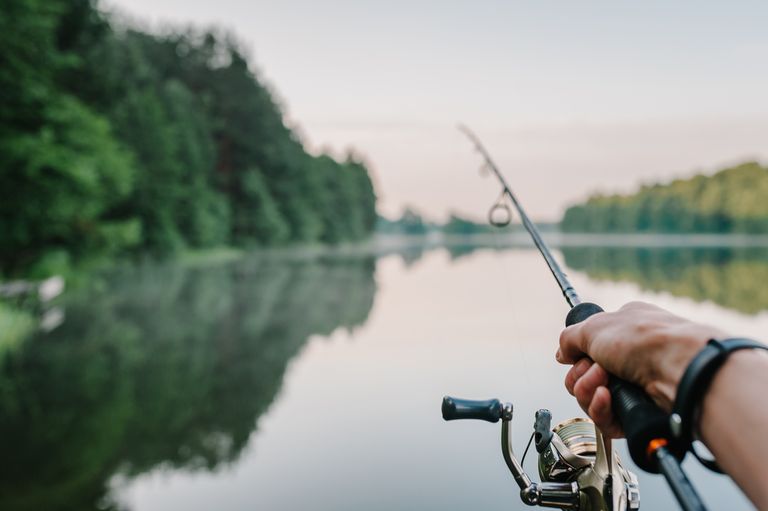Spotted Bass vs. Largemouth Bass: What's the Difference?

If you love to fish for bass, knowing the differences between species can help you change your technique based on which species you're looking for. Different fish behaviors can require an adjustment to your strategy, and if you're after spotted bass, it pays to know what adjustments to make.
Also, consider that you could be in a situation where certain types of bass species are legal to catch and keep, while others could require that you release them after your catch. You don't want to break the law and end up with a fine or other problems when just trying to enjoy fishing and stay safe.
Here's what you need to know to differentiate between spotted bass and the largemouth variety. When that comes easy, you won't worry about making a mistake. That makes fishing a lot more fun.
Physical Appearances
The largemouth comes by its name honestly, while the spotted variety of bass is also aptly named, with spots on its sides instead of stripes.
Largemouth bass have broad bodies and big mouths extending past their eyes. They're typically greenish with dark, horizontal stripes on their sides.
The spotted variety of bass is smaller than its largemouth counterpart and has more defined dark spots that follow its lateral lines. You can also determine whether it's a spotted bass by the size of the mouth, which won't extend past the eyes like it does on a largemouth variety.
Habitat Preferences
The kind of habitat a bass prefers can also help you decide which species you're dealing with.
The largemouth variety of bass generally looks for still or slow-moving waters like lakes, ponds, and calm rivers. You can find this bass species in or around submerged logs or heavy vegetation, as these fish like structures they can use for cover.
Spotted bass thrive in faster-moving waters such as reservoirs and rivers. They like rocky structures and look to spend time in clearer, deeper waters. If you're fishing in these waters, you can expect to see more spotted than largemouth bass.
Behavior and Feeding
The largemouth bass is an opportunistic feeder that targets bigger prey. You may see them feeding on other fish, frogs, and crayfish, and they lurk near cover while waiting to ambush their prey. That gives them a significant advantage against the smaller animals they're trying to catch.
On the other hand, the spotted variety is a more aggressive hunter who will go after the prey they're trying to catch instead of waiting for it to come to them. This species eats crayfish and small fish but feeds actively in deeper environments and open waters with more opportunities.

Size and Weight Differences
The largemouth bass species typically get bigger than some other bass species. Because the trophy versions of largemouth bass often exceed ten pounds, they are commonly sought-after fish. However, the spotted variety generally only weighs around five pounds.
Regional differences can lead to size variations, though, so you might catch a spotted or largemouth bass outside the norm for the species, especially if you move to a different area or are fishing on vacation in a different place instead of where you would typically be.
Fishing Techniques
To successfully catch largemouth bass, anglers often use soft plastics, jigs, or topwater lures in and around cover like fallen timber or weeds. This can encourage bass to investigate the movement, leading to higher chances of catching them.
You'll want to focus on finesse techniques like jigging or drop-shotting for the spotted variety of bass. If you practice these and use them around rocky structures and in rougher or deeper waters, you'll increase your chances of luring your desired fish to the location for a successful catch.

Fighting Behavior
Largemouth bass are explosive when they fight. They strike rapidly and offer strong resistance when caught.
You can use that to your advantage if you can hang on for a while. Because of their aggressive, out-of-the-gate performance, they may get tired quickly. That will allow you to reel them in.
However, pound for pound, the spotted bass is considered the stronger fighter. That's because they can stay energetic for a more extended period and continue to resist capture. Reeling them in and getting them into the boat can be a significant challenge, especially if they're in deep water.

Taste and Table Fare
Both the spotted and largemouth bass are good to eat, and they're both safe to consume.
Most people release largemouth bass as part of sport fishing, but you can keep them for food, too. The spotted variety is often eaten, and there are multiple ways to prepare it.
Where to Find Spotted Bass or Largemouth Bass
The largemouth species is found across the United States but is most prevalent in warmer regions like the South. You'll find these bass in nearly every state from coast to coast, and you can fish for them just about anywhere.
The spotted variety is more localized to the Southeastern U.S., specifically in areas like Georgia, Alabama, and the Midwest.

Enjoy Safe Bass Fishing Adventures With a Boater Education Course
Before you head out to catch largemouth or spotted bass, take the time for a boater education course. You can learn all about safety on the water and ensure that you have the knowledge and skills to operate your boat safely.
This knowledge can make a day on the water more fun, whether or not you catch any bass! Plus, our online courses meet the requirements for boater education in the U.S. and Canada.
It's easy to get started. Just choose the BOATERexam course for your state and start learning! Or, if you're in Canada, take our Canadian course, which has been approved by Transport Canada.




